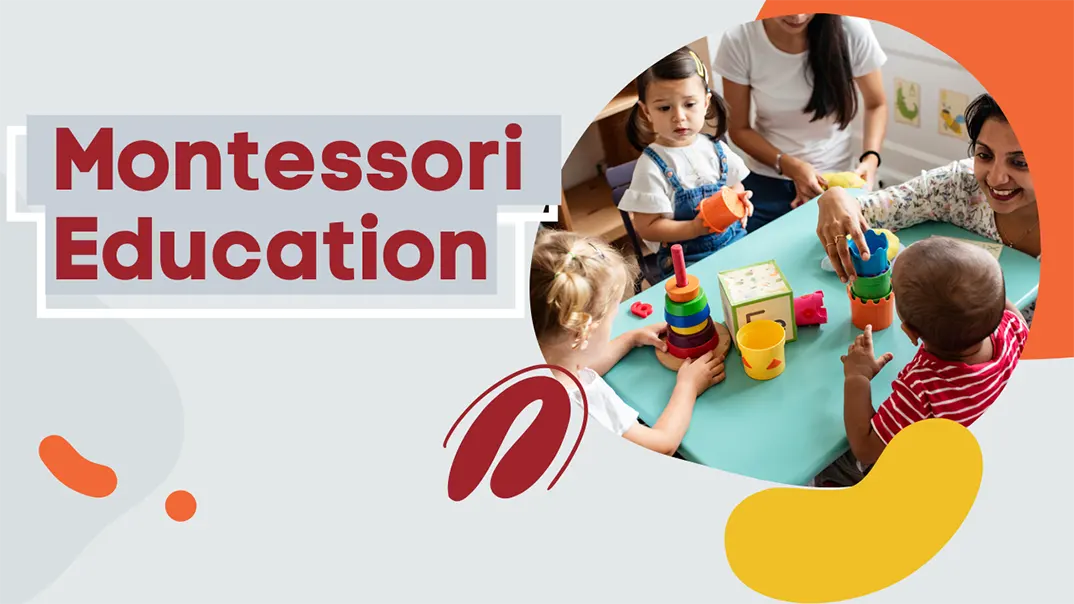Have you ever wondered why Montessori education has captivated the world for over a century? What sets this method apart from traditional approaches, making it a preferred choice for parents and educators seeking a child-centered learning experience? And most importantly, how does it nurture the natural potential of every child, fostering independence and holistic development?
In the diverse landscape of today’s educational systems, Montessori education stands out for its unique philosophy and practical approaches, earning widespread admiration and attention. Montessori education is a child-centered approach emphasizing self-directed learning, hands-on experiences, and individualized pacing. Rooted in scientific observation and designed to nurture natural curiosity, it has transformed how we think about education for over a century.
Ready to explore Montessori education’s origins, core principles, and practices? Let’s uncover what makes this approach a timeless beacon of child-centered learning.
Introduction to Montessori Education
Montessori education is a holistic, child-centered approach that fosters self-directed activity, hands-on learning, and collaborative play. It seeks to develop the whole child, including their physical, social, emotional, and cognitive capabilities. Developed by Dr. Maria Montessori in the early 20th century, this educational approach is based on the belief that children learn best in an environment that respects their natural development and provides opportunities for independent growth.
Key Principles:
- Respect for the Child: Montessori believed that respect for the child is the cornerstone of effective teaching. This respect is demonstrated by observing the child and providing materials and activities that correspond to their interests and developmental stage.
- The Absorbent Mind: During the early years of life, children have a remarkable ability to absorb information from their environment. Montessori education takes advantage of this phase by offering a rich environment full of opportunities to engage in meaningful activities.
- Sensitive Periods: Montessori identified distinct periods in a child’s development when they are particularly receptive to learning specific skills, such as language, order, or sensory experiences. Recognizing and supporting these sensitive periods is crucial in Montessori education.
- Prepared Environment: The classroom is designed to facilitate independent learning and exploration. Materials are displayed on accessible shelves, allowing children to choose what they want to work on, which promotes autonomy.
- Autoeducation: Montessori education emphasizes learning that is self-directed and self-correcting. Children learn at their own pace, guided by their interests and abilities, with teachers serving as facilitators rather than traditional instructors.
The Origins and Development of Montessori Education
Pioneered by Dr. Maria Montessori, Montessori education represents a profound shift in how educational systems nurture children. It emphasizes an educational approach based on the phases of a child’s natural development rather than traditional curriculum-based methods. This transformative approach originated with Montessori, evolved through her educational practices, and spread globally, continuing to influence the educational landscape worldwide.
Founder Maria Montessori’s Biography

Maria Montessori, born in 1870 in Chiaravalle, Italy, was a pioneer in early childhood education and the first woman in Italy to receive a medical degree. Her interest in education began while working at the University of Rome’s psychiatric clinic, where she interacted with children with developmental disabilities. Observing their behavior and progress, Montessori developed a deep interest in educational reform. Her approach, which focused on fostering natural growth and respect for a child’s independence, was revolutionary at the time and laid the foundation for her future educational methodology.
The Establishment of Montessori Education
In 1907, Montessori established the first “Casa dei Bambini” or Children’s House in San Lorenzo, Rome. This innovative classroom environment was equipped with specially designed educational materials and furniture sized for children, emphasizing learning through exploration and the use of the senses. Montessori’s methods encouraged self-discipline and autonomous activity based on the principle that children learn best when they are free to explore their interests. The success of this first classroom led to the development of the Montessori Method, which emphasized hands-on learning, independence, and a child-centered approach.
Global Spread and Development
Following the success of the first Montessori school, her methods quickly caught international attention. Montessori traveled extensively to train teachers and spread her pedagogy, influencing early childhood education worldwide. By the mid-20th century, Montessori schools had been established in Europe, North America, and later, in Asia and Africa. Each school adapted Montessori’s principles to fit local cultural and educational contexts while maintaining the core philosophy of encouraging children’s self-initiated exploration. Today, Montessori education is practiced in thousands of schools worldwide, a testament to its enduring relevance and effectiveness in fostering independent, thoughtful, and creative learners.
Core Theories of Montessori Education
Montessori education is grounded in deeply interwoven theories that distinguish its approach from traditional education systems. These theories focus on the natural development stages of children and emphasize the importance of adapting educational approaches to fit these stages. Here, we explore four key theoretical foundations critical to understanding Montessori education.
Sensitive Periods in Child Development
Maria Montessori identified several “sensitive periods” during early childhood when the child is exceptionally receptive to certain stimuli and learning experiences. These periods are windows of opportunity during which children are naturally inclined to acquire specific skills, such as language, order, sensory refinement, and motor skills. According to Montessori, recognizing and supporting these sensitive periods with appropriate educational materials and freedom to explore can significantly enhance learning effectiveness and development.
The Theory of the Absorbent Mind
The concept of the “absorbent mind” is central to Montessori philosophy, referring to the ability of young children (primarily from birth to age six) to absorb knowledge from their environment effortlessly and unconsciously. During this stage, children’s brains are like sponges, soaking up every aspect of their environment, language, and culture. Montessori argued that this natural inclination underscores the need for a rich, nurturing environment that encourages curiosity and learning through discovery.
Balance Between Freedom and Discipline
Montessori education emphasizes the balance between freedom and discipline within the learning environment. Freedom in Montessori terms does not mean unrestricted access to anything the child wishes, but rather the liberty to explore and engage with materials suited to their developmental stage within a structured framework of order. Rather than being imposed by an adult, discipline is viewed as something the child develops internally through engagement with the environment. Montessori believed that effective self-discipline in later life begins with a child-centered environment that encourages children to take responsibility for their learning.
The Concept of “Work”
In Montessori education, “work” refers to all purposeful activities the child engages in, from playing with blocks to washing dishes. Montessori redefined children’s play as their work, considering it serious and important. The Montessori classroom is designed to support this work by providing age-appropriate tools that help develop life skills and cognitive abilities. This approach views work not merely as a task to be completed but as an integral part of the child’s development and self-construction. In the Montessori context, work benefits the child’s growth, fostering concentration, self-discipline, and satisfaction in completing tasks.
Montessori Education in Practice
Montessori education in practice is a dynamic, hands-on approach that integrates purposeful environments, uniquely designed materials, and self-directed learning. Each aspect, from classroom layout to teaching tools, is intentionally crafted to support a child’s natural curiosity and developmental needs.
สภาพแวดล้อมในห้องเรียนแบบมอนเตสซอรี
How does the environment shape a child’s learning experience? The Montessori classroom is designed to be a space that fosters independence, exploration, and self-discipline. With child-sized furniture, open shelves, and carefully organized materials, the environment empowers children to take ownership of their learning journey.
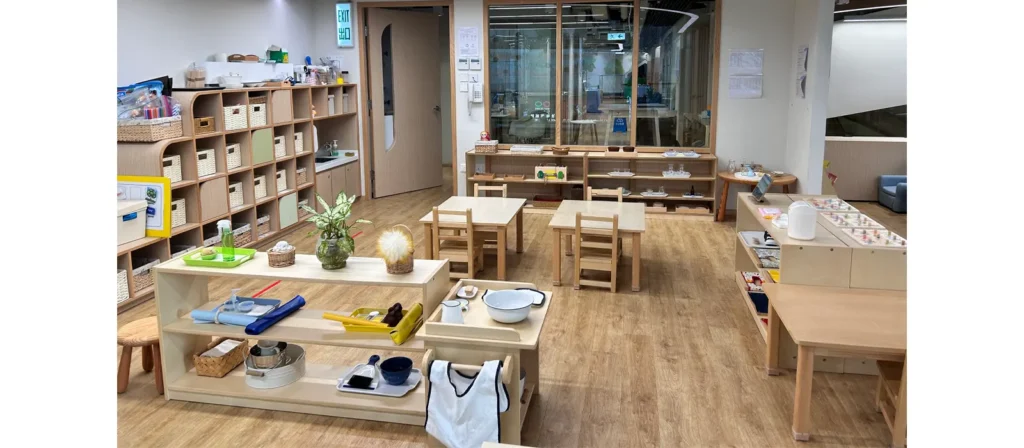
Key Layout Features:
- Dedicated Learning Areas: The classroom is organized into zones, such as the Practical Life Area, Sensorial Area, Math Area, Language Area, and Science & Cultural Area. Each area serves a clear purpose, providing a structured yet flexible environment for learning.
- Child-Friendly Design: All furniture is scaled to match children’s height and proportions, ensuring comfort and accessibility. Materials are displayed neatly and are within easy reach, promoting independence as children can freely choose, use, and return items.
- Emphasis on Safety and Organization: The design prioritizes the convenience and safety of children’s activities. Pathways are clear, and materials are organized to encourage orderly habits and a sense of responsibility.
Practical Life Education
What do buttoning shirts, pouring water, and sweeping floors have to do with education? In Montessori schools, practical life activities are the cornerstone of early childhood development. These tasks involve mastering daily life skills and developing concentration, coordination, and independence.

- Care of Self: Activities like dressing, grooming, and food preparation.
- Care of the Environment: Cleaning, gardening, and organizing.
- Grace and Courtesy: Learning manners and social interactions.
Sensorial Education
How do children make sense of the world around them? Sensorial education in Montessori helps children refine their senses and understand abstract concepts through tangible experiences.

- Pink Tower: This is to understand size and volume.
- Sound Cylinders: For distinguishing different sounds.
- Smelling Jars and Texture Boards: These are for exploring smells and textures.
Mathematics Education
Can children truly enjoy math? Montessori math materials are designed to make abstract mathematical concepts concrete and enjoyable. Through hands-on activities, children deeply understand numbers, operations, and patterns.
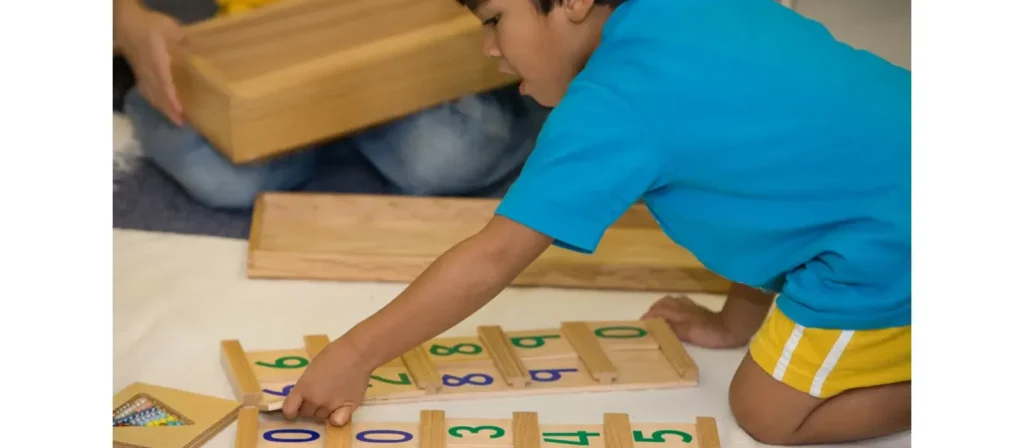
- Learning to count and recognize numbers.
- Understanding place value with tools like the Golden Beads.
- Progressing to addition, subtraction, multiplication, and division with interactive methods.
Language Education
How does Montessori support language development? Montessori language education focuses on natural language acquisition through immersive and interactive experiences. It integrates speaking, reading, and writing seamlessly.
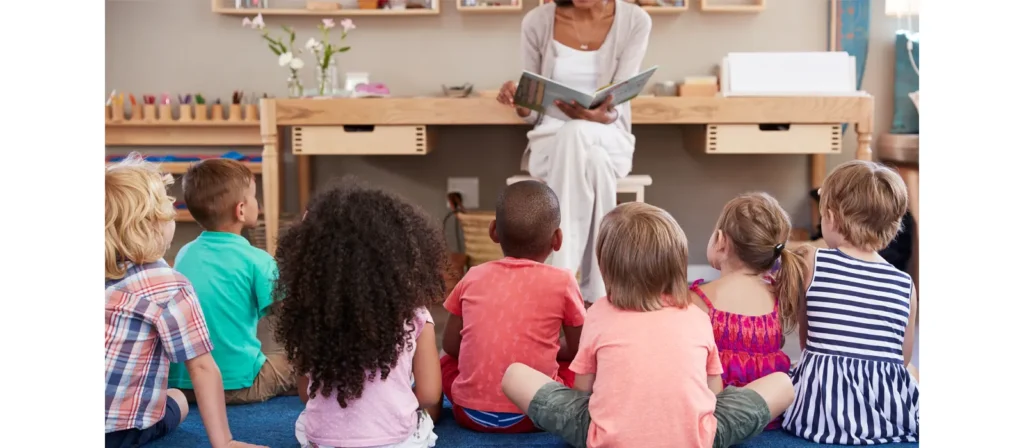
- Sandpaper Letters: To connect sounds with written symbols.
- Moveable Alphabet: To encourage word-building and phonemic awareness.
- Reading Practice: Using phonetic readers and storytelling.
Science and Cultural Education
How do children explore the wonders of the world? Science and cultural education in Montessori inspires curiosity about nature, geography, history, and other cultures.
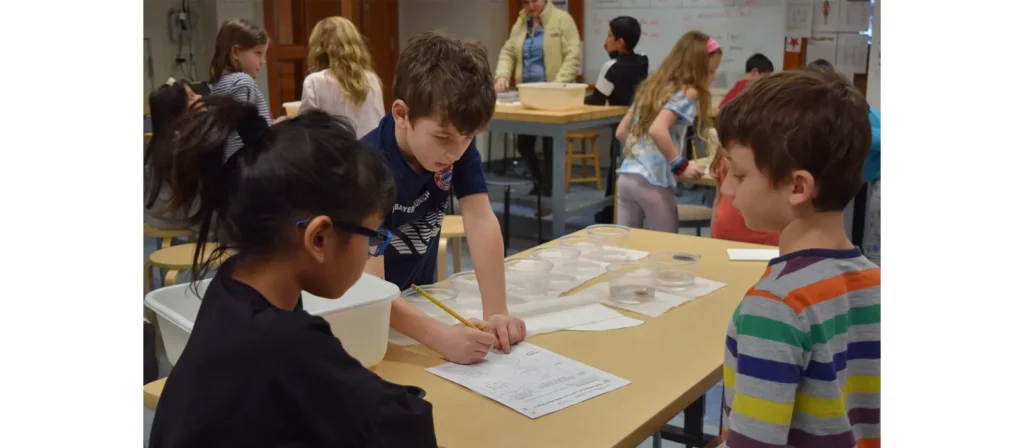
- Geography: Maps, globes, and land/water forms to understand the world’s structure.
- Biology: Exploring plants and animals through hands-on observation.
- History: Learning timelines and the passage of time.
Key Differences Between Montessori and Traditional Education
Key Differences at a Glance
| ด้าน | Montessori Education | การศึกษาแบบดั้งเดิม |
|---|
| Philosophy | Child-centered, focusing on individual development and respect for the child’s pace. | Teacher-centered, with a curriculum that targets the average needs of the class. |
| Classroom Environment | Mixed-age classrooms, with materials accessible to children for free and autonomous use. | Age-segregated classrooms with fixed furniture and teacher-directed seating. |
| Role of the Teacher | Guide or facilitator who observes and supports the child’s learning process. | The instructor who leads the class provides information and enforces discipline. |
| Curriculum | Flexible and adaptive, based on each child’s interests and developmental pace. | Structured and standardized, adhering to a preset curriculum across all students. |
| Learning Approach | Self-directed and hands-on learning, encouraging exploration and discovery. | Focused on direct instruction and often reliant on memorization and repetition. |
| Assessment | Ongoing and qualitative, based on individual progress and developmental milestones. | Periodic and quantitative, often based on testing and uniform benchmarks. |
| Materials | Specific Montessori materials are designed to encourage active learning and discovery. | Standard educational tools and textbooks are used uniformly across the class. |
| Interaction | Collaborative with an emphasis on social development through community activities. | Competitive, with a focus on individual achievement and rankings. |
| Goals | Develop self-discipline, independence, and a lifelong love of learning. | Achieve specific academic standards and prepare for the next educational level. |
| Classroom Dynamics | Students choose activities based on their interests, which may vary daily. | Students follow a fixed schedule and curriculum, with little choice in activities. |
Teaching Approach: Child-Centered vs. Teacher-Centered
- Montessori: Children are at the center of their learning journey in Montessori classrooms. Teachers act as guides, observing and supporting students as they explore materials and follow their interests. Learning is individualized and adapted to each child’s pace and abilities.
- Traditional: Traditional classrooms are typically teacher-led, with instructors directing lessons and all students following the same curriculum at the same pace. The focus is often on meeting standardized goals and preparing for tests.
Learning Materials: Hands-On vs. Abstract
- Montessori: Montessori classrooms use uniquely designed, hands-on materials to teach concepts. For example, children use bead chains to learn math or sandpaper letters to develop literacy. These materials allow children to physically explore and internalize abstract ideas.
- Traditional: Traditional education often relies on textbooks, worksheets, and lectures. While these tools can be effective, they emphasize abstract learning, which may not fully engage younger learners.
Curriculum: Individualized vs. Standardized
- Montessori: The curriculum in Montessori education is flexible and tailored to each child’s needs and interests. Students can choose activities and spend time mastering them, fostering a deep understanding of concepts.
- Traditional: Traditional education follows a standardized curriculum with set subjects and schedules. Students move through topics at the same pace, regardless of their mastery or interest.
Role of the Teacher: Guide vs. Instructor
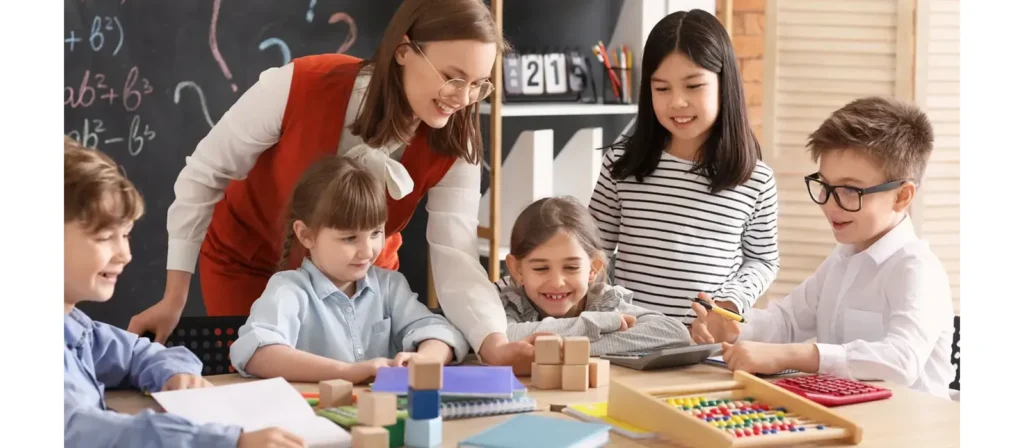
- Montessori: Montessori teachers act as facilitators, observing each child and providing guidance as needed. They encourage independence and allow children to take ownership of their learning.
- Traditional: Teachers in traditional classrooms often take on the role of lecturers or authority figures, delivering information and directing activities for the entire class.
Classroom Environment: Prepared vs. Structured
- Montessori: Montessori classrooms are meticulously prepared environments with child-sized furniture, open shelving, and organized materials. The design promotes independence, allowing children to freely choose and return materials.
- Traditional: Traditional classrooms typically follow a more rigid structure, with rows of desks and a teacher’s desk at the front. Activities are often group-oriented, with less freedom for independent exploration.
Which Approach is Better?
Montessori vs Traditional Education: Neither system is inherently superior; the best approach depends on a child’s learning style, family values, and educational goals. Montessori education is well-suited for children who thrive in self-directed and hands-on learning environments. In contrast, traditional education can work well for those who excel in structured, teacher-led settings.
Advantages of Montessori Education
1.Promotes Holistic Development
Montessori education emphasizes the child’s development, focusing on cognitive, social, emotional, and physical growth. This approach ensures that children grow into well-rounded individuals.
2.Fosters Independence and Self-Discipline
Montessori education nurtures independence and self-discipline by encouraging children to choose activities and manage their time. Children learn to take responsibility for their learning and actions.
3.Ignites a Love for Learning and Intrinsic Motivation
Montessori fosters curiosity and a genuine love for learning through hands-on, engaging materials and self-directed exploration. Children are motivated not by rewards or punishments but by their natural desire to explore and understand.
4.Focuses on Personalized Development
Montessori classrooms respect individual learning styles and paces. Children are given the time and space to master concepts at their own speed, ensuring no one is left behind or held back.
5.Nurtures Concentration and Focus
Montessori activities are designed to enhance concentration and focus. The structured yet flexible approach allows children to develop deep attention and persistence while working on tasks.
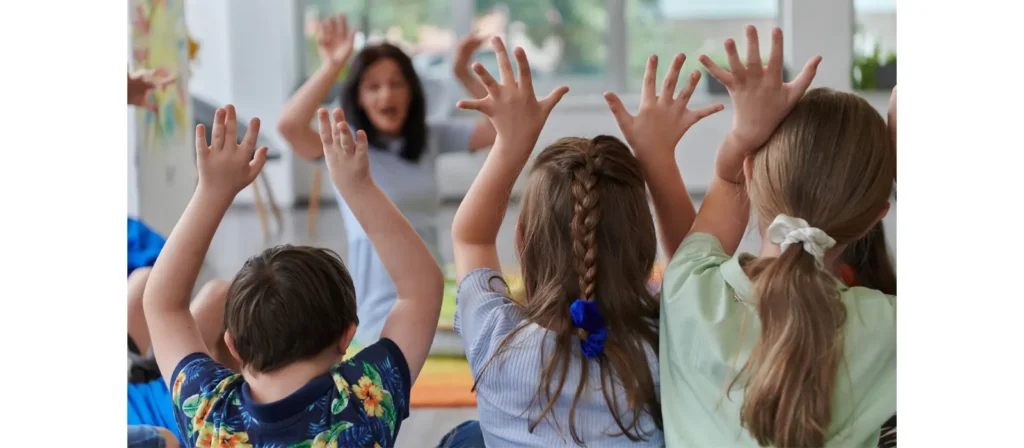
Challenges Faced by Montessori Education
1.High Professional Standards for Teachers
Montessori teachers require specialized training and a deep understanding of Montessori principles. This demand for high qualifications can sometimes hinder finding skilled educators.
2.Cost of Implementation
Setting up and maintaining a Montessori classroom can be costly due to the unique materials and smaller class sizes, making it less accessible for some schools and families.
3.Difficulty Integrating with Traditional Education Systems
Montessori education can sometimes face challenges when transitioning students into traditional education systems, as the methods and pacing differ significantly.
4.Lack of Uniform Evaluation Standards
The absence of standardized testing in Montessori education can make it challenging for parents and educators to evaluate a child’s progress in ways that align with conventional systems.
บทสรุป
In conclusion, Montessori education offers a transformative approach to learning that can significantly benefit children by fostering independence, critical thinking, and a love for learning. For parents, understanding the core principles and benefits of Montessori can help them decide if this educational philosophy is right for their child. By creating an environment that respects the child’s natural development and encourages self-direction, Montessori education equips children with the tools they need to succeed in school and in life. As more families explore this approach, the impact of Montessori education continues to shape the future of learning across the globe.

